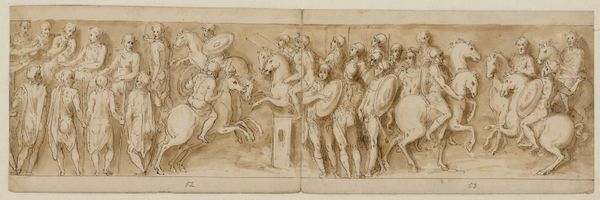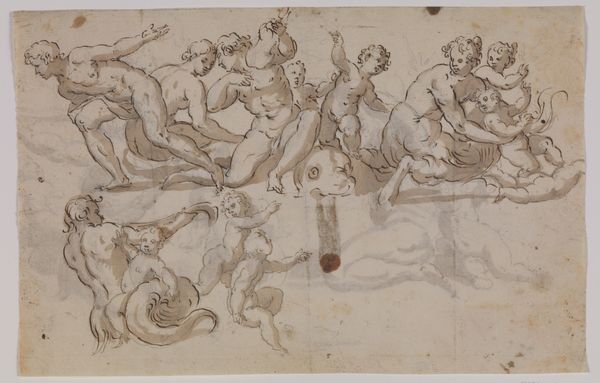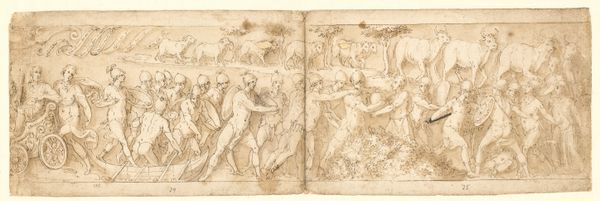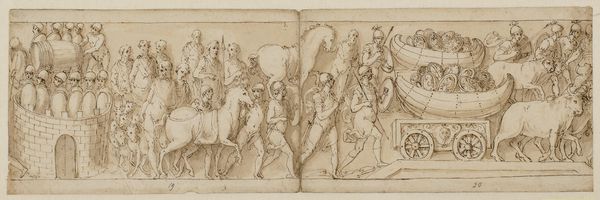
32 kopier efter Marcus Aurelius-søjlen, Piazza Colonna i Rom 1544 - 1618
0:00
0:00
drawing
#
drawing
#
etching
#
figuration
#
ancient-mediterranean
#
history-painting
Dimensions: 133 mm (height) x 432 mm (width) (bladmaal)
Giovanni Guerra made this pen and brown ink drawing, entitled "32 copies after the Column of Marcus Aurelius, Piazza Colonna in Rome," sometime before 1618. The Column of Marcus Aurelius was erected in the late second century to celebrate the emperor's military victories. Guerra's drawing, now in the collection of the Statens Museum for Kunst, is a copy of the column’s spiraling relief sculpture. Rome, during Guerra’s time, was a city of powerful families, and the institutions of art were dominated by papal patronage. Ancient Roman art was admired, studied, and copied. What was the role of these copies? They allowed artists to study the forms and compositions of the antique world. They also created opportunities for artists to insert themselves into a lineage of artistic achievement. To fully understand this drawing, we need to consider the institutions of art training and patronage that shaped Guerra’s career. We can research the Roman art world of the late 16th and early 17th centuries, and the role of the antique in artistic practice.
Comments
No comments
Be the first to comment and join the conversation on the ultimate creative platform.













